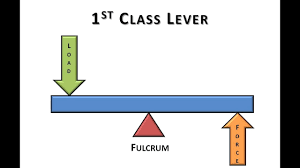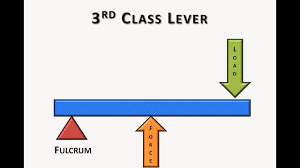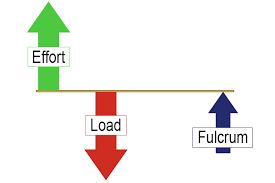Simple machines/phusics
1/28
There's no tags or description
Looks like no tags are added yet.
Name | Mastery | Learn | Test | Matching | Spaced |
|---|
No study sessions yet.
29 Terms
What happens when you switch from low gear to high gear while riding a bike?
A) It becomes easier to pedal.
B) The pedal speed increases, but it becomes harder to pedal.
C) The pedal speed decreases, but it becomes easier to pedal.
D) There is no difference in pedal difficulty.
B)
Which of the following best describes the difference between low and high gear?
A) Low gear provides high speed but low torque.
B) Low gear provides low speed but high torque.
C) High gear provides high speed and high torque.
D) High gear provides low speed but high torque.
B)
What is torque?
A) The speed at which something moves.
B) A measurement of the force causing something to rotate around a point.
C) The distance an object travels.
D) The amount of energy an object requires to start moving.
B)
Using a longer wrench to twist a nut makes it easier. Why is this?
A) A longer wrench has higher torque.
B) A shorter wrench has higher torque.
C) A longer wrench provides lower speed.
D) The force is reduced with a longer wrench.
A)
What does the formula Torque=Force×Length represent?
A) The relationship between speed and force.
B) The relationship between force and rotation.
C) The amount of energy needed to move an object.
D) The calculation of distance traveled.
B)
What happens when two gears are connected and rotate, but they are the same size?
A) The gears rotate in the same direction at the same speed.
B) The gears rotate at different speeds, but in the same direction.
C) The gears rotate at the same speed, but in opposite directions.
D) The gears rotate at different speeds and in opposite directions.
C)
What is the effect of having a larger driver gear compared to a smaller driven gear?
A) The output speed is increased.
B) The output speed is reduced.
C) The output speed stays the same.
D) The gears will rotate in the same direction.
B)
What is a gear train, and what does the middle gear (idler gear) do?
A) A gear train is a set of gears that work together, and the idler gear keeps the direction of rotation the same.
B) A gear train is a set of gears that work together, and the idler gear speeds up the output.
C) A gear train is a set of gears that work together, and the idler gear slows down the output.
D) A gear train is a set of gears that works independently, and the idler gear causes torque.
A)
What is the main purpose of a lever?
A) To increase the distance an object travels.
B) To perform the same work with less effort.
C) To change the direction of force.
D) To make an object heavier.
B)
Where should you apply the input force on a lever to generate power?
A) At the short side of the lever.
B) In the middle of the lever.
C) At the longer side of the lever.
D) It doesn’t matter where you apply the force.
C)
What happens if the fulcrum (triangle) is placed in the middle of the lever?
A) The lever will generate no force.
B) The lever will generate the maximum force.
C) The lever will increase the mechanical advantage.
D) The lever will rotate in the same direction.
A)
How does the position of the fulcrum affect the mechanical advantage of a lever?
A) The closer the fulcrum is to the edge, the greater the mechanical advantage.
B) The closer the fulcrum is to the edge, the smaller the mechanical advantage.
C) The position of the fulcrum doesn’t affect the mechanical advantage.
D) The fulcrum should always be in the center for maximum advantage.
A)
What is the main purpose of a pulley?
A) To increase the distance an object travels.
B) To help us multiply the force exerted to lift objects.
C) To change the direction of an object’s movement.
D) To reduce the weight of an object.
B)
What happens if friction is added to a pulley system?
A) The force required to lift an object decreases.
B) The force required to lift an object stays the same.
C) The force required to lift an object increases.
D) The pulley becomes more efficient.
C)

first, second, and third
first

first, second, and third
third

first, second, and third
second
Why are inclined planes useful?
A) They require more force to lift an object
B) They increase the height an object can be lifted
C) They reduce the force needed to lift an object
D) They eliminate the need for force completely
C)
In the example of lifting a 500N object, how much force is required to lift it directly without using an inclined plane?
A) 200N
B) 50N
C) 500N
D) 100N
C)
When using an inclined plane to lift a 500N object, what happens to the force needed compared to lifting it directly?
A) The force stays the same
B) The force is reduced
C) The force is eliminated
D) The force is increased
B)
What is the main advantage of using an inclined plane to lift an object?
A) It increases the speed of lifting
B) It lets you lift the object with less force
C) It allows you to lift heavier objects
D) It allows you to lift the object higher
B)
When using an inclined plane, what happens to the path taken to lift the object?
A) The path becomes steeper
B) The path becomes shorter
C) The path becomes longer, but the force is reduced
D) It remains the same
C)
What is applied force?
A) The force exerted by a surface to prevent objects from passing through.
B) A force that opposes motion and slows down objects.
C) A force applied to an object by a person or another object.
D) The force that acts on an object due to gravity.
C)
What type of force involves pulling an object with a rope?
A) Gravitational force
B) Normal force
C) Frictional force
D) Tension force
D)
What is the primary purpose of normal force?
A) To slow down moving objects.
B) To prevent solid objects from passing through each other.
C) To keep objects in motion indefinitely.
D) To pull objects towards a planet-sized mass.
B)
Which force acts on an object due to gravity?
A) Frictional force
B) Applied force
C) Weight force
D) Tension force
C)
What is a key characteristic of gravitational force?
A) It involves ropes or strings.
B) It only applies to small objects.
C) It prevents objects from floating by pulling them towards a planet-sized mass.
D) It opposes motion between two surfaces.
C)
What happens in the absence of friction?
A) Objects would float into the sky.
B) Objects would keep moving indefinitely.
C) Objects would stay still without external forces.
D) Objects would pass through solid surfaces.
B)
Which of the following describes frictional force?
A) It is caused by the interaction of two objects and slows down motion.
B) It is the force exerted by a surface to support an object.
C) It pulls objects toward the center of the Earth.
D) It is applied by a person or object to move another object.
A)